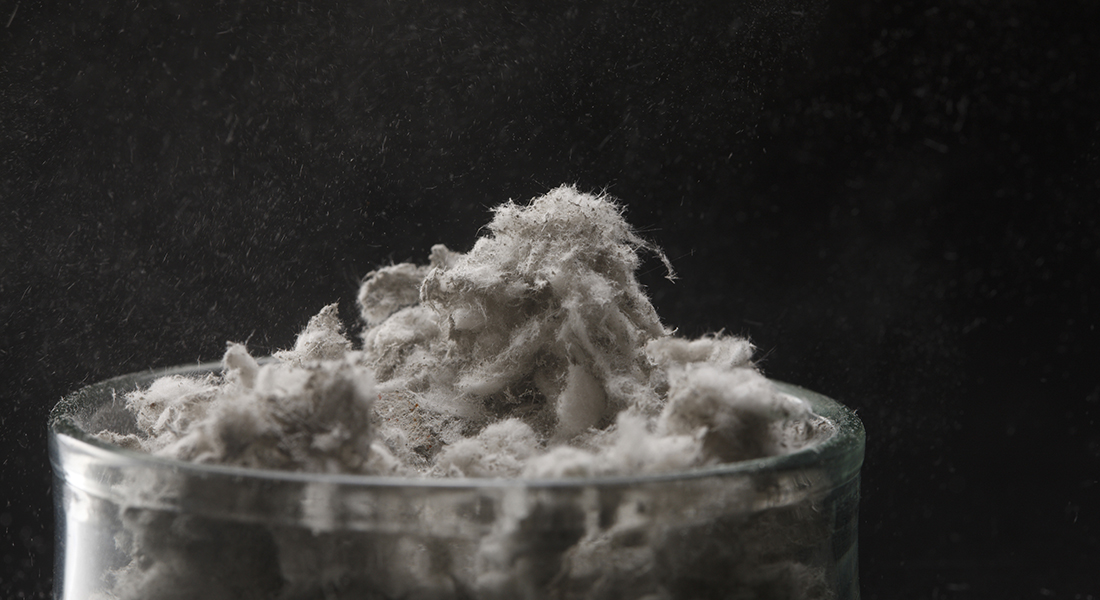
20 Oct Asbestos: Still a Concern?
Unsuspected by many property owners, asbestos is still found in many older homes and buildings and is still a potential concern for business owners, homeowners, and anyone planning a real estate deal or a building demolition. The presence of asbestos can adversely affect a real estate closing. And while most asbestos has been removed in many older homes and building, how does the average person know if their home or building contains asbestos? And second, are all the regulations and fear of asbestos even necessary? Unfortunately, yes. The fact is that asbestos fibers are dangerous and can cause serious health issues when inhaled.
What is asbestos and why should I be concerned?
The word asbestos is derived from a Greek adjective meaning inextinguishable. Asbestos is a naturally occurring mineral that is still mined in Canada, Brazil, China, Russia and India. The biggest consumers of asbestos are China, India and Russia; the main exporters of asbestos are Russia, Kazakhstan, Brazil and Canada.
While still mined, its use has been severely reduced. Over 50 countries have banned its use completely. Asbestos is still used in limited and minimal situations in the United States and Canada. In the United States, common residential and commercial uses of asbestos and asbestos containing materials stopped around 1990.
When asbestos fibers are inhaled chronically over long periods of time, they can cause lung cancer and other respiratory diseases. Because of this, asbestos is a regulated substance that is governed both by the Occupational Safety and Health Administration (OSHA) and the Environmental Protection Agency (EPA). And it is important to understand that asbestos does not necessarily present a dangerous situation when the material is intact; that is, it is non-friable whereby asbestos fibers are not becoming airborne. That is why it may be useful to enlist a professional to help you identify and then understand your particular situation.
Where might I find suspected asbestos in an older home or building?
It is reasonable to suspect that a house or commercial building built before 1990 could harbor asbestos. But where should you look? The truth is, almost anywhere. Here are likely places that may harbor asbestos-containing building materials:
- Basements
- Utility rooms
- Mechanical rooms
- Flooring
- Crawl spaces
- Attics
- Roofs
- Building exteriors
Because asbestos was a component of many older building materials and textiles including 9-inch floor tiles and adhesive, troweled-on plaster walls and ceilings, decorative “popcorn” ceilings, piping insulation, loose-fill attic insulation material, window glazing, boilers, piping insulation, gaskets, wall compounds, asphalt roofing shingles and cementitious materials to name a few, many of these “suspect” materials are still being tested and are on occasion found to contain asbestos.
Where are the most likely places to find asbestos in my home or building?
Three of the most common places where asbestos was used in houses and commercial buildings are basements (particularly around heating units), in vinyl floor tiles, and in exterior siding/shingles. When examining a basement, look around furnaces and water heaters. You may see material that looks like corrugated cardboard banded to pipes. Elbow joints may also be covered in smooth-textured material that appears to have been hand-formed. Both of these may harbor asbestos. Nine-inch vinyl floor tiles often contain asbestos, including the adhesive (mastic) material that attaches the tiles to the subfloor. Finally, exterior shingle materials often contain asbestos, both when used as siding or roofing.
What if I suspect that I have asbestos in my home or building?
Do not disturb the material. Call ESA for help. We will provide useful advice over the phone or, in some circumstances, we will schedule a site visit for a more personal consultation. ESA’s asbestos inspectors offer expert assessment services that identify if asbestos or presumed asbestos containing materials are present in the building. ESA’s services are also used prior to a building demolition or renovation where suspected asbestos-containing building materials might be disturbed. If removal is recommended, ESA can recommend a New Jersey-licensed asbestos removal contractor to eliminate the asbestos materials safely and in accordance with the applicable rules and regulations.



